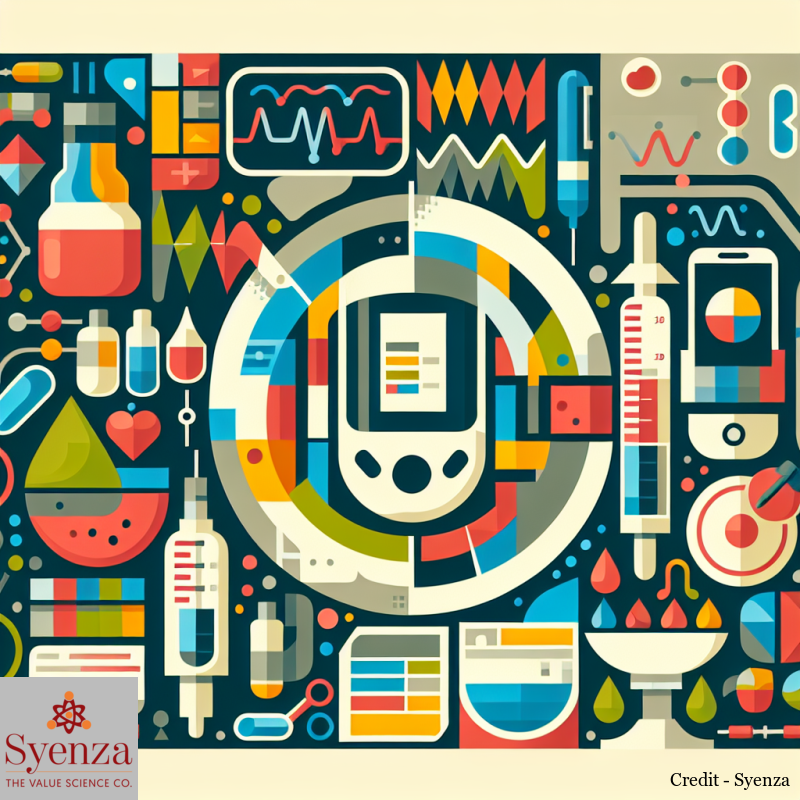
Advancements in CGM for Type 2 Diabetes Management
A recent JAMA Insights article, explores the integration of continuous glucose monitoring as a complementary tool to traditional hemoglobin A1c (HbA1c) and fingerstick blood glucose meter (BGM) monitoring for managing type 2 diabetes, particularly in primary care settings. It highlights how continuous glucose monitoring provides real-time interstitial glucose data, enabling better glycemic control through alerts for hyper- and hypoglycemia and trend analysis for self-management. The key findings highlight continuous glucose monitoring’s proven efficacy in reducing HbA1c levels and mortality risks, supported by randomized clinical trials (RCTs) and observational data, positioning it as a standard for insulin-treated patients and a valuable option for non-insulin regimens.
In a trial involving 158 adults on multiple daily insulin injections, continuous glucose monitoring users achieved a mean HbA1c reduction from 8.5% to 7.7% over 24 weeks, compared to a drop from 8.5% to 8.0% with BGM (P = .02), illustrating a statistically significant 0.3% greater improvement. Similarly, among 175 adults on basal insulin alone, continuous glucose monitoring led to an HbA1c decrease from 9.1% to 8.0% at 8 months, versus 9.0% to 8.4% for BGM (P = .02), highlighting consistent benefits across regimens. A meta-analysis of 12 RCTs with 1,248 participants further reinforces these trends, reporting an overall HbA1c difference of -0.31% (95% CI, -0.475% to -0.211%) favoring continuous glucose monitoring, with benefits observed in insulin, non-insulin, and mixed treatment groups. These findings, grounded in rigorous trial data, emphasize continuous glucose monitoring’s role in enhancing precision in glucose management.
Real-World Impact
Continuous glucose monitoring involves a subcutaneous sensor that transmits interstitial glucose readings every 1 to 5 minutes to a receiver or cloud repository, correlated closely with blood glucose levels. This real-time data transmission, combined with configurable alerts (e.g., fixed alarm at 55 mg/dL), allows patients to self-insert devices using online resources, making it accessible for primary care management. Observational evidence from a 5-year Veterans Affairs study of 2,752 patients links continuous glucose monitoring metrics—such as lower time in target range (70-180 mg/dL)—to reduced all-cause mortality (adjusted hazard ratio 0.77; 95% CI, 0.66-0.90), while higher variability and time above range increased risks (hazard ratios 1.27 and 1.17, respectively). The American Diabetes Association’s standards provide level A evidence for continuous glucose monitoring in insulin users and level B for non-insulin type 2 diabetes, with low-certainty suggestions for sulfonylurea users at hypoglycemia risk, highlighting the shift toward dynamic, data-driven monitoring over static HbA1c assessments.
Complication Risk Cuts
The mortality and complication reductions associated with CGM carry significant implications for health economics and outcomes research (HEOR), particularly in cost-effectiveness analyses for type 2 diabetes management. By decreasing HbA1c and time below range (<4% <70 mg/dL), continuous glucose monitoring could lower long-term healthcare expenditures on complications like retinopathy, aligning with broader trends in value-based care where technologies demonstrating level A evidence, as per American Diabetes Association guidelines, justify expanded reimbursement.
In market access contexts, the device’s integration into primary care—via simple self-insertion and cloud-based analytics—supports scalable adoption, potentially influencing pricing models for sensors from manufacturers like Dexcom or Abbott. For reimbursement policies, the article’s meta-analysis and Veterans Affairs data bolster arguments for HTA submissions, highlighting reduced hospitalization risks from hypoglycemia alerts, which could enhance payer negotiations in systems like Medicare, where continuous glucose monitoring coverage has evolved to include non-insulin users.
